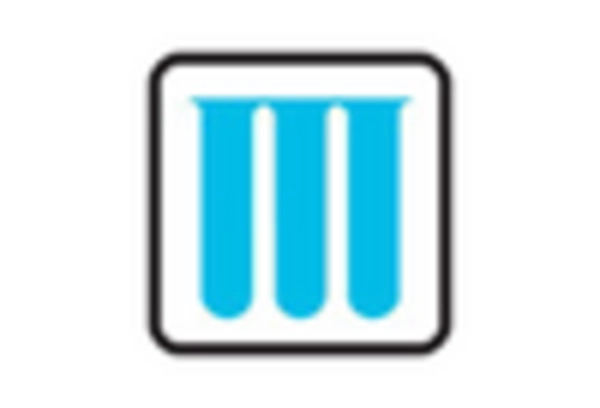The Abortion Drug Market is currently characterized by a complex interplay of competitive dynamics, driven by evolving regulatory landscapes, increasing demand for reproductive health solutions, and a growing emphasis on patient-centric care. Key players such as Pfizer (US), HRA Pharma (FR), and Teva Pharmaceuticals (IL) are strategically positioning themselves through innovation and regional expansion. Pfizer (US) has focused on enhancing its product portfolio, while HRA Pharma (FR) emphasizes accessibility and affordability in its offerings. Teva Pharmaceuticals (IL) is leveraging its extensive global reach to optimize supply chains and ensure consistent availability of its products. Collectively, these strategies contribute to a competitive environment that is both fragmented and dynamic, with companies vying for market share through differentiated approaches.
In terms of business tactics, companies are increasingly localizing manufacturing to reduce costs and improve supply chain efficiency. The market structure appears moderately fragmented, with several players holding significant shares but no single entity dominating. This fragmentation allows for a variety of strategies to coexist, as companies like Mylan (US) and Gedeon Richter (HU) explore partnerships and collaborations to enhance their market presence. The collective influence of these key players shapes the competitive landscape, fostering an environment where innovation and operational efficiency are paramount.
In August 2025, HRA Pharma (FR) announced a partnership with a leading telehealth provider to expand access to its abortion drug offerings. This strategic move is significant as it aligns with the growing trend of digital health solutions, enabling patients to access care remotely. By integrating telehealth services, HRA Pharma (FR) not only enhances patient access but also positions itself as a forward-thinking leader in the reproductive health space, potentially increasing its market share in a competitive landscape.
In September 2025, Teva Pharmaceuticals (IL) launched a new initiative aimed at optimizing its supply chain through advanced analytics and AI technologies. This initiative is crucial as it seeks to enhance operational efficiency and ensure the timely delivery of products to healthcare providers. By investing in technology-driven solutions, Teva Pharmaceuticals (IL) demonstrates a commitment to maintaining a competitive edge in a market where reliability and responsiveness are increasingly valued by stakeholders.
Moreover, in July 2025, Pfizer (US) expanded its manufacturing capabilities in Europe to meet the rising demand for abortion drugs. This expansion is indicative of Pfizer's strategic focus on regional growth and its intent to solidify its position in the European market. By increasing production capacity, Pfizer (US) not only addresses immediate market needs but also prepares for future demand fluctuations, thereby enhancing its competitive stance.
As of October 2025, current trends in the Abortion Drug Market indicate a shift towards digitalization, sustainability, and the integration of AI technologies. Strategic alliances are becoming increasingly important, as companies recognize the value of collaboration in navigating regulatory challenges and enhancing product offerings. Looking ahead, competitive differentiation is likely to evolve from traditional price-based competition to a focus on innovation, technological advancements, and supply chain reliability. This shift underscores the necessity for companies to adapt and innovate continuously in order to thrive in an ever-changing market landscape.

















Leave a Comment